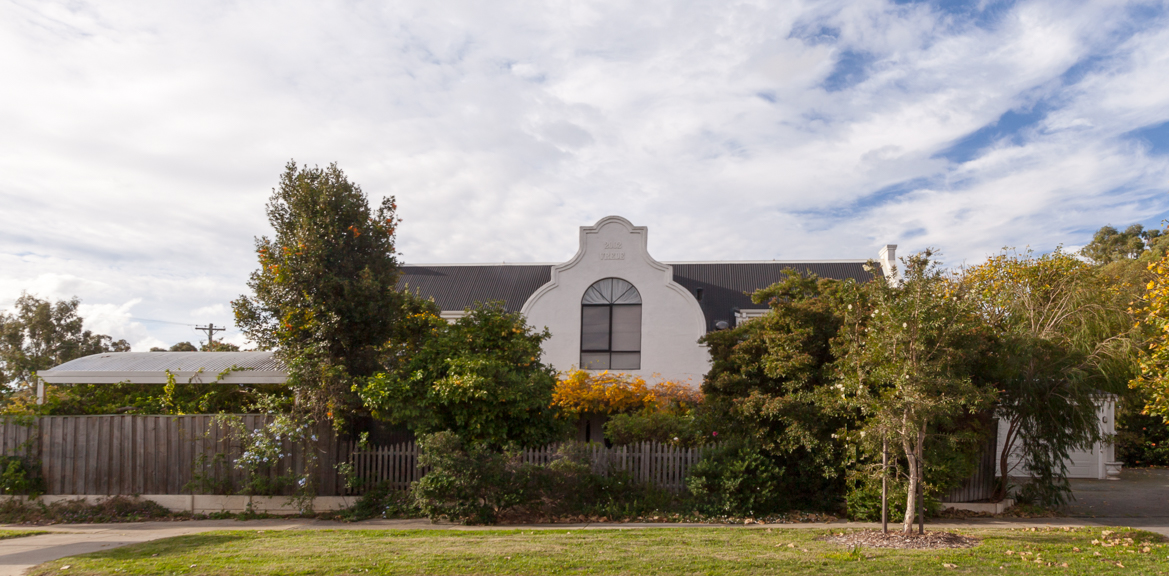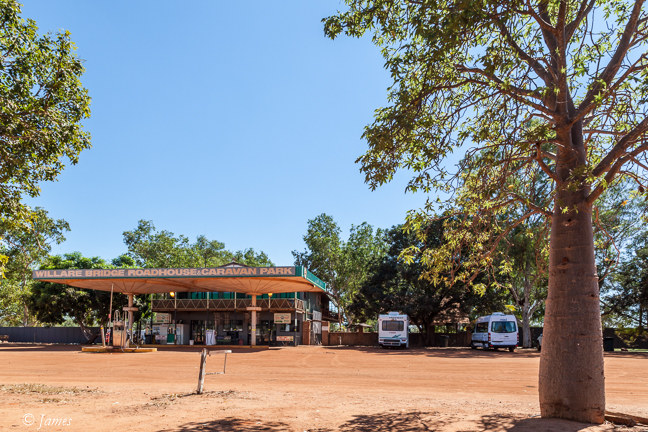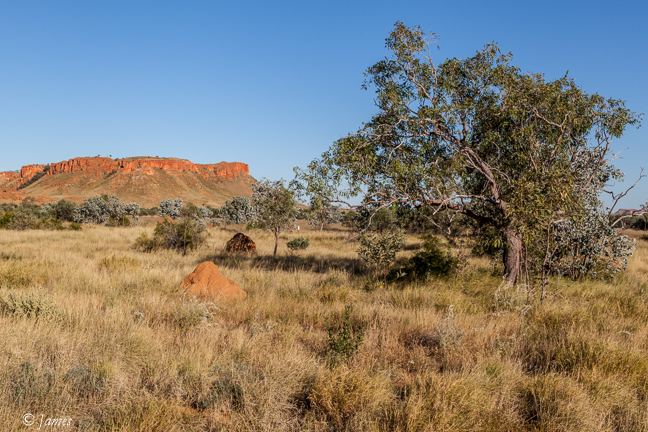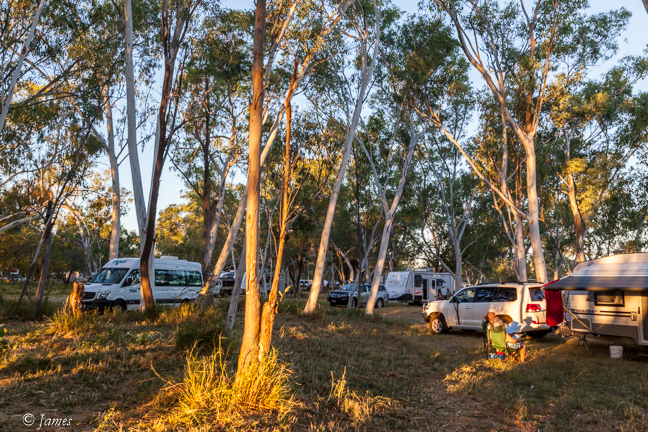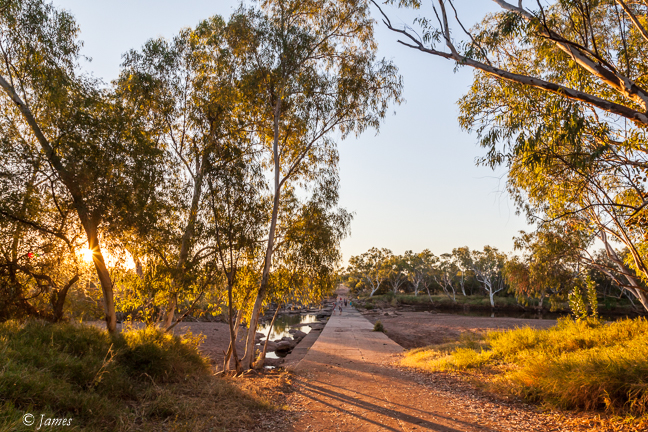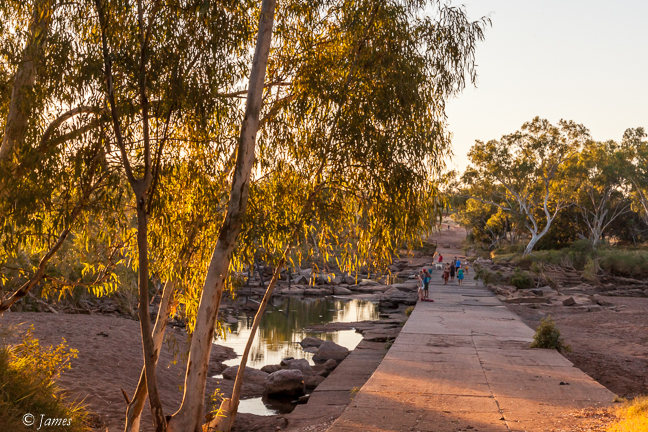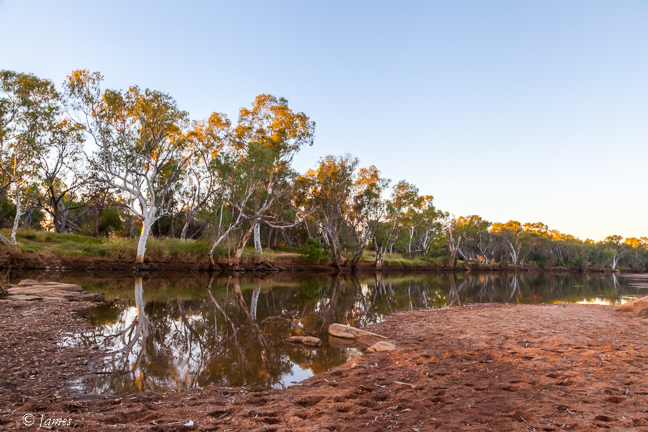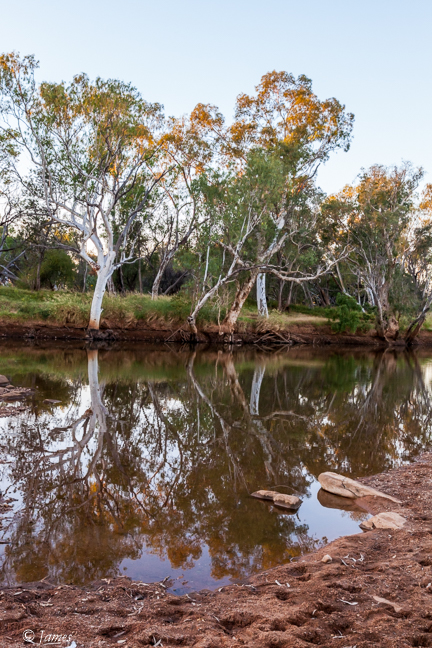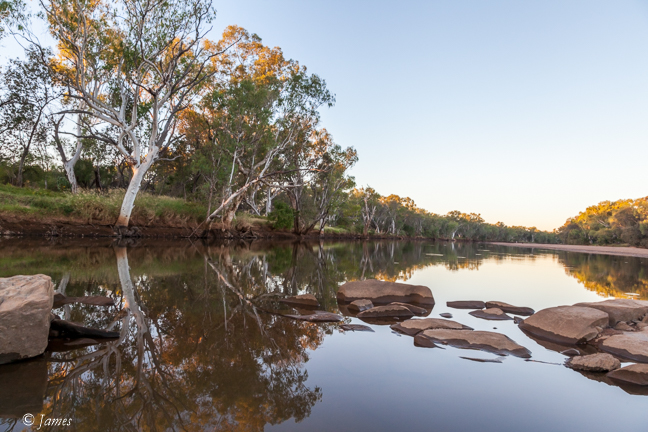Today we drove our longest day, 575 km from Broome through Fitzroy Crossing, and on to Mary Pool. The long straight road crossed a mostly flat monotonous plain with areas of open grass or small trees, only relieved by the occasional Boabs. But all was pleasantly green owing to the late rains. Our first stop was the lonely Willare Bridge Roadhouse near the junction to the Derby-Fitzroy road. It boasts a caravan park and pool, and some large trees, but charges for the privilege. The temperature soared to 39C and remained there till Fitzroy in the late afternoon, another old town on slightly higher ground to avoid the high annual wet season floods of the Fitzroy River.
The land is similar to the South African low-veldt, though the latter has white or grey sandy soil and small grey thorn trees with a tinge of dull green. As we approached Larrawa Station, flat-topped hills, remnants of a long-past flood, rose above the plain, the sandstone crest glowing red in the late afternoon sun. The intense primary colours of the Pilbara and Kimberley are so different to most other places in the world; the red rocks contrast against the blue sky, the green shrubs and trees, or the occasional green lawns.
Mary Pool is a lovely cool spot for free camping, adjacent to the old low level road crossing. Tall trees line the sandy banks, reflected in the still pools. These scenic spots have toilets and rubbish bins; one is supposed to only stay a night but some stay longer.
Low level bridges are common in the north of Western Australia – in some cases (eg the Gibb River road) only a hard surface below a few cm of flowing water. These reminded me of those I crossed in Rhodesia as a child, sometimes with a metre of the fast flowing Hunyani river around the 1952 Hillman Minx. It was essential to keep the motor running, in low gear, moving slowly. A stall could be fatal if water entered through the exhaust into the motor. Water would enter the cabin slowly, necessitating a ‘de-water’ on the other side. This is not a recommended process – cars have been swept away, and people drowned. It is always a good idea to test the depth and strength of the water flow by stepping into it before driving into it. And to beware of floating debris like trees!
